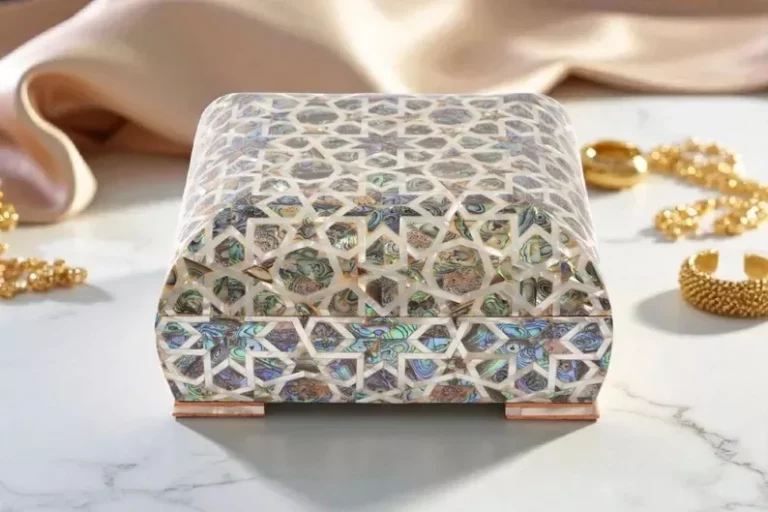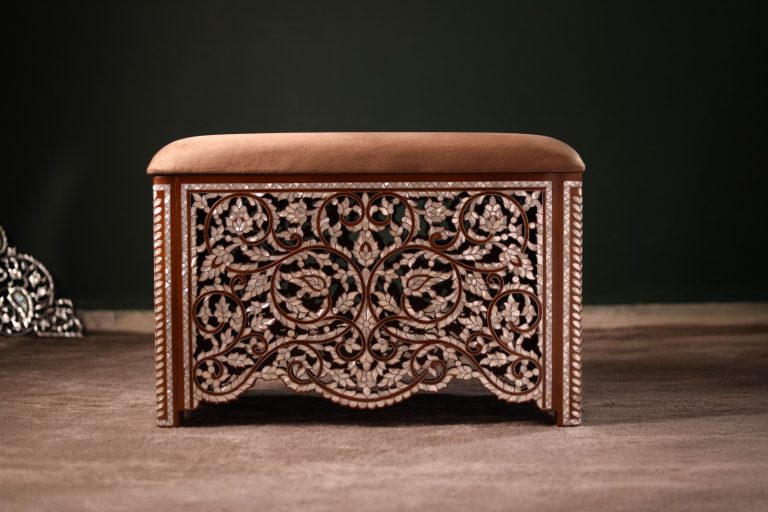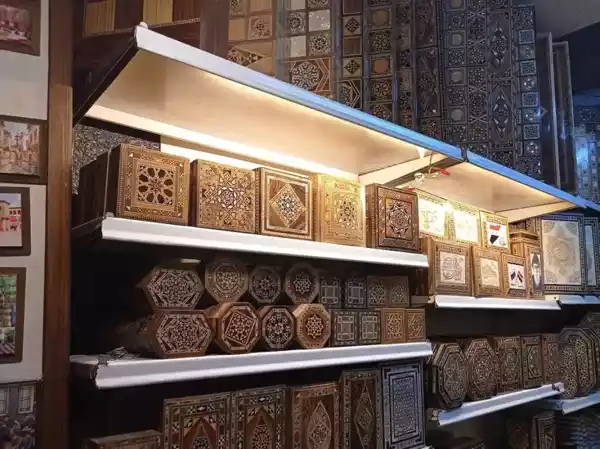Damascus Whispers: The Timeless Art of Syrian Woodcraft
In the shadowed alleys of Old Damascus, where stone walls whisper stories of empires past, a different kind of
history is carved – not in books, but in wood. Here, craftsmanship is not merely a trade, but a sacred
continuity, passed from father to son, hand to hand, generation to generation. Damascus, one of the world’s
oldest continuously inhabited cities, has long been a cradle of civilization. But beyond its political or religious
significance lies another legacy: the mastery of handcrafts, particularly the exquisite arts of mosaic inlay,
mother-of-pearl marquetry, and silver-detailed woodwork.
In an age of mass production and synthetic perfection, Damascus stands as a quiet rebellion – a city that still
creates art with soul.
A Mosaic Born of Memory
The art of Damascus mosaic – a fusion of tiny wood pieces, metal threads, and glowing fragments of shell –
traces its lineage to the Ottoman period, when Syrian artisans began experimenting with geometric
compositions. But it was in Damascus, during the 18th century, that this technique matured into what we now
recognize as handmade Syrian mosaic inlay. Crafted with astonishing precision, each mosaic is assembled
piece by piece, using natural walnut wood, copper, bone, and luminous mother-of-pearl.
To Western eyes, these intricate patterns evoke a kind of sacred geometry, a spiritual rhythm made material.
But for Damascenes, these motifs are deeply familiar – reminiscent of the mashrabiya windows of old homes,
or the decorative tiles of Umayyad courtyards. These aren’t just ornaments; they are cultural memory made
tangible.
The Legacy of Syrian Marquetry
Among Damascus’s finest contributions to world craftsmanship is its mother-of-pearl inlay tradition – known
internationally as Syrian marquetry. Unlike the more subdued Western styles, Syrian inlay bursts with detail
and contrast. Slivers of shimmering shell are set into richly stained woods – walnut, olive, and sometimes
beech – forming arabesque scrolls, stars, and floral medallions. The precision is staggering: a single jewelry
box may contain hundreds of individually cut shell pieces, each polished and set by hand.
This marquetry art doesn’t just decorate furniture – it transforms it. Tables, cabinets, mirrors, and trays become
canvases for miniature architectural marvels. And with increasing global interest in handcrafted
mother-of-pearl furniture, Syrian artisans find their work sought after by collectors and interior designers
across the United States, the United Kingdom, and much of Europe.
Silver in the Grain: The Ottoman Inlay Tradition
Damascus’s obsession with detail extends beyond shell and wood. Since the Mamluk and Ottoman periods,
artisans have been embedding silver wires into wood and metal surfaces. The technique – originally developed
for ceremonial swords and armor – found new life in decorative panels, Quran stands, and furniture.
These silver inlay techniques are no longer common in today’s fast-paced global furniture markets, which is
exactly what makes them so special. A silver-inlaid Damascus tray or metal-inlaid wood panel is not just a
décor item; it is a testimony to an artisan’s patience and vision, often requiring weeks or even months of work.
Wood as Canvas, Craft as Language
Central to all of this is the wood itself – often Syrian walnut, dark and warm, with a subtle grain that glows
when polished. Artisans in Damascus don’t simply carve wood; they compose with it. The grooves cut to
receive inlays must be mathematically precise, as even a fraction of a millimeter off will ruin the symmetry.
Whether creating a folding chair, a mirror frame, or a large chest, the process follows the same rhythm:
design, cut, inlay, polish – and always, soul.
This is not factory work. These are not products. They are stories.
Crafting Identity in a Globalized World
In a digital age, where many things feel rootless and artificial, the handmade object reasserts the value of the
real. Owning a Damascus mosaic box, or a mother-of-pearl-inlaid table, is not simply about beauty – it’s about
connection. To place such an object in your home is to invite history, geography, and human spirit into your space.
And as DamaschMagicEast.com continues to bridge the distance between Damascus and the world – from Los
Angeles lofts to London townhouses to Berlin ateliers – we are reminded that heritage, when lovingly
preserved and masterfully executed, never goes out of style.
Here, in every curve of shell, in every glowing thread of silver, Damascus speaks.
And the world is listening.



